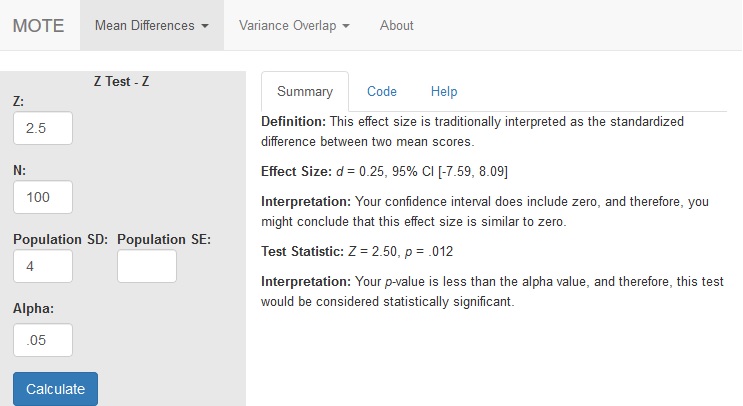d from z-statistic for Z-test
Description
This function displays $d_{z}$ for Z-tests based on the Z-statistic. The normal confidence interval is also provided if you have sigma ($\sigma$). If “sig” is left blank, then you will not see a confidence interval.
The formula for $d_{z}$ is: $$d_{z} = \frac{Z}{\sqrt(N)}$$
The formula for $d_{z}$ is: $$d_{z} = \frac{M - \mu}{\sigma_M}$$
R Function
d.z.z(z, sig = NA, n, a = 0.05)
Arguments
- z = statistic
- sig = population standard deviation
- n = sample size
- a = significance level
Example
A recent study suggested that students (N = 100) learning statistics improved their test scores with the use of visual aids (Z = 2.50, SD = 4.00).
Function in R:
d.z.z(z = 2.5, sig = 4, n = 100, a = .05)
MOTE
Screenshot

Effect Size:
Effect Size: $d_{z}$ = 0.25, 95% CI [-7.59, 8.09]
Interpretation:
Your confidence interval does include zero, and therefore, you might conclude that this effect size is similar to zero.
Summary Statistics:
Not applicable.
Test Statistic:
Z = 2.50, p = .012
Interpretation:
Your p-value is less than the alpha value, and therefore, this test would be considered statistically significant.
